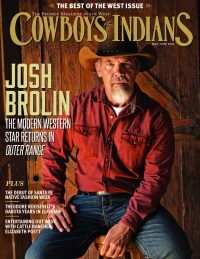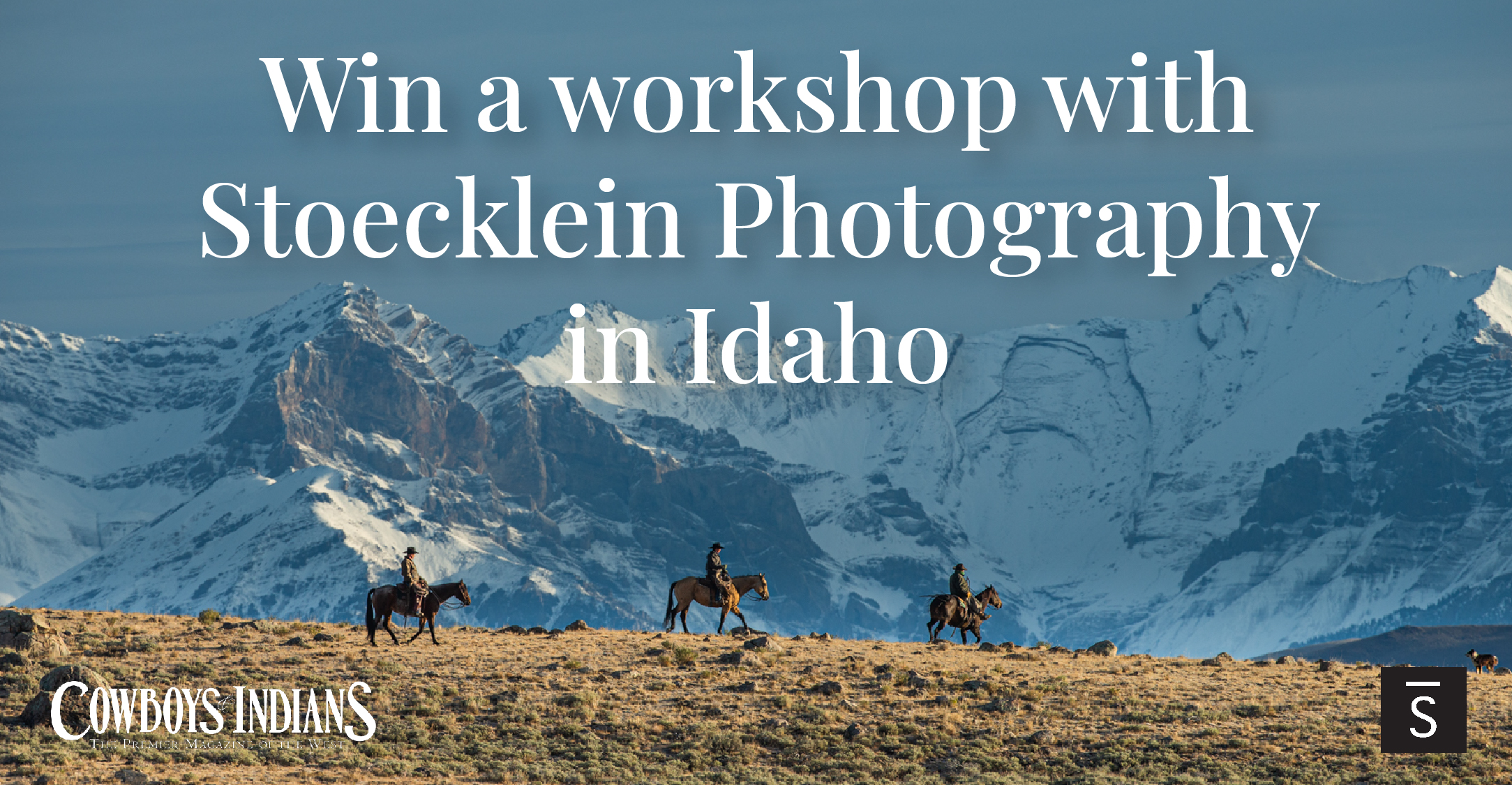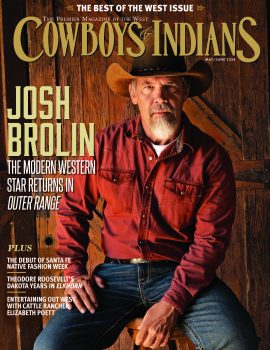
In the wake of his recent passing, we revisit a 2016 Live From interview in which Tab Hunter talked about raising and riding horses and his work in western movies.
Cowboys & Indians: You’ve continued to raise and ride horses long after leaving Hollywood. But you were a horse enthusiast long before you were a movie star, correct?
Tab Hunter: I’m not just an enthusiast — I’m a horse lover. I have been my whole life, you know? Horses are my life. In fact, just the other day, my mare and her foal were registered as Oldenburgs. The judges were here and it really went well, so I was very pleased about that.
C&I: And as you mention in your autobiography, you actually were “discovered” while you were cleaning out a horse stall.
Tab: [Laughs.] That’s correct. I was a stable boy on the weekends at a place called Du Brock’s Riding Academy, on the corner of Riverside and Los Feliz in Los Angeles. There was this guy by the name of Dick Clayton, who really became a part of my family. He later became one of the top agents in Hollywood for James Dean, Jane Fonda, Burt Reynolds, and so many other people. But when I met him, he was an actor and he was doing a photo shoot at the stable for a magazine layout with Ann Blyth. I was fascinated when I found out it was for a movie magazine because I was a big movie nut as a kid. He talked to me when I was cleaning out a stall and asked, “Did you ever think of acting?” I said, “Gosh, no. I didn’t.” And then years later, while I was in the Coast Guard, I was on the East Coast and Dick was doing a play on Broadway. I went in to see him, and he started introducing me to the right people.
C&I: Your experience with horses served you well in your second movie, Gun Belt, a western in which you costarred with George Montgomery.
Tab: I learned an important lesson while making that movie. We were doing a scene in which they wanted a stuntman to gallop up on a horse and stop this wagon. And I said, “Well, hell, I could do that.” And I did. But then later, Jack Conner — a wonderful guy and a great stuntman; he and his wife became very good friends of mine. Anyway, Jack came over to me and said, “We know you can ride, kid. But you see that guy over there? The guy dressed just like you? Well, he’s got to make a living too. So why don’t you let him do the stunt? And then you can tell the director, ‘If you want to shoot that from a closer angle, I can do the close-up.’ Everybody’ll be happy that way.” That made a lot of sense to me. And that’s what I did from then on.
C&I: Didn’t you use your own horse in some of your later westerns?
Tab: Yes. Her name was Swizzlestick. She was a Green Jumper Champion at the Del Mar National Horse Show. What I did was, I just threw a stock saddle on her and used her in The Burning Hills. It was a Louis L’Amour novel that was adapted into a screenplay for a movie I did with Natalie Wood. And you know what? Swizz turned out to be a better movie horse than she was a show horse. I mean, you hit her with the lights and all of that attention went to her head. She was like a glamour girl. It made me laugh. I used her again in They Came to Cordura, the movie I made with Gary Cooper and Rita Hayworth, and in Gunman’s Walk. She had a lot of work in that film.
C&I: You’ve often said that Gunman’s Walk ranks among the best movies you ever made. Is that because it gave you a chance to play a bad guy for a change?
Tab: Well, I’d already done that a few times on live television. But yes, Gunman’s Walk was one of the best experiences I ever had. It was written by Frank Nugent, who also wrote The Quiet Man for John Wayne and John Ford. And it was directed by Phil Karlson, who was so terrific and so underrated. The funny thing is, Warner Bros. lent me out to Columbia [Pictures] to make that picture. And I’d heard terrible stories about Harry Cohn, who was head of Columbia at that time. When I went in to meet with him, the first thing he said was, “So you’re Tab Hunter.” And I said, “Yes, sir.” And he said, “You know, Robert Wagner wants to do this role.” And I looked him in the eye and said, “Then you should get Bob Wagner.” And I turned around to leave. He said, “Wait a minute! Wait a minute!” And we wound up talking about the script for a half-hour. That was the only time I ever met him. And then I did the movie.
OUT ON VIDEO: Tab Hunter Confidential, the 2015 documentary feature based on Tab’s autobiography, is available on DVD and various streaming platforms. In the film, Tab speaks candidly about being a closeted gay man during his heyday in ’50s Hollywood.
NOT ON VIDEO: According to Tab, almost every episode of The Tab Hunter Show — the 1960-61 sitcom in which he played a freewheeling comic-strip artist living in Malibu — has been lost. Which explains why we never see it on DVD or digital subchannels.
REMEMBERING THE DUKE: Tab costarred with John Wayne in The Sea Chase — not a western but a 1955 World War II drama. “He was a phenomenal person,” Tab says. “I was thrilled when I found out he wished he had signed me up for his company, Batjac Productions — but I was already under contract with Warner Bros.”
From the January 2016 issue.
More Live From
Brady Jandreau
Bill Pullman
Johnny Crawford













